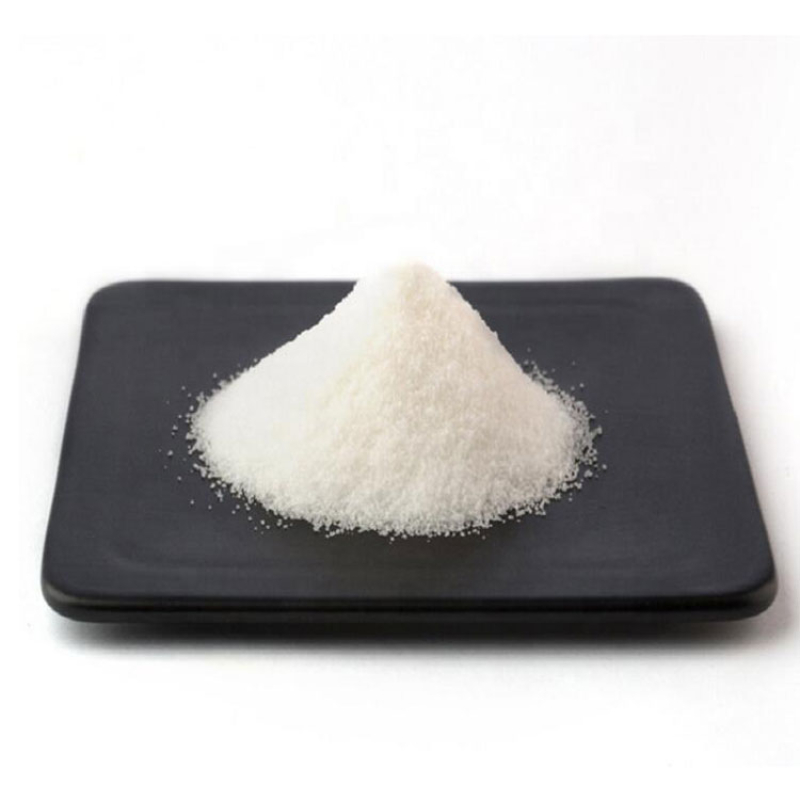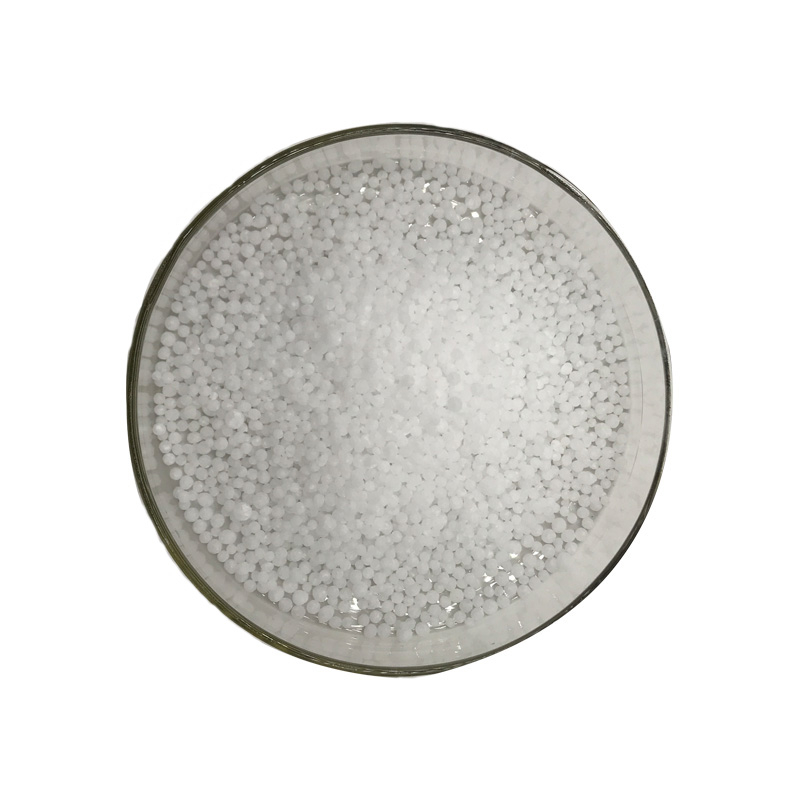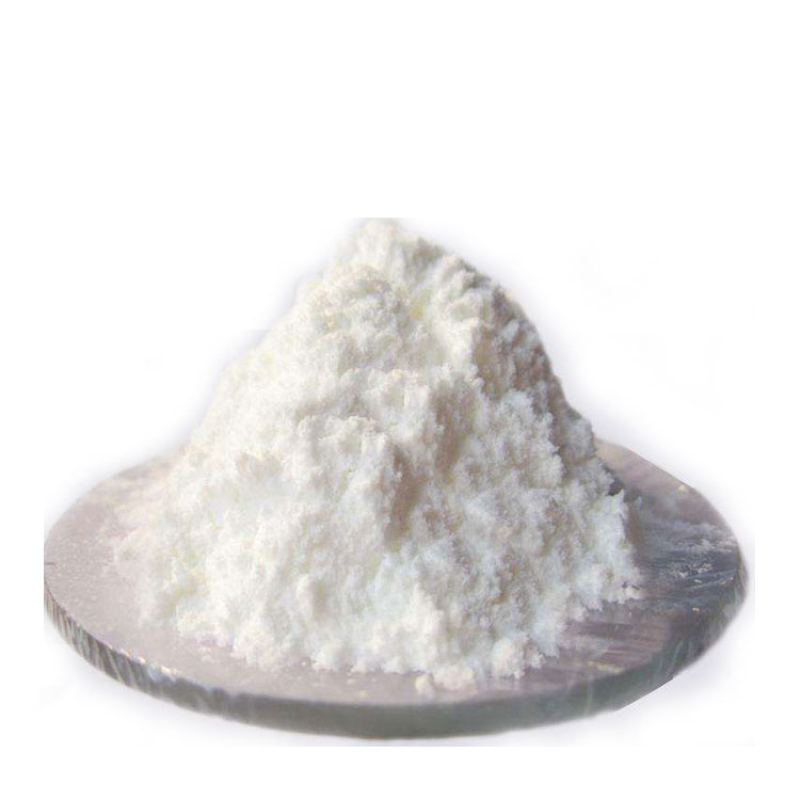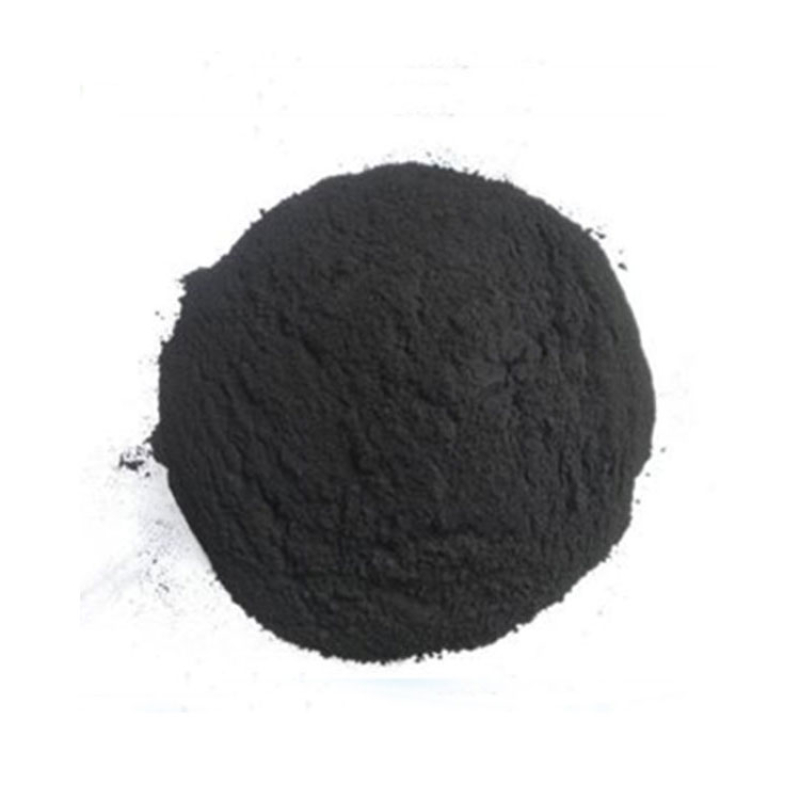Products Description of 2,4,5-Trichloropyrimidine CAS#5750-76-52,4,5-Trichloropyrimidine is a new type of reactive dye intermediate raw material and a synthetic raw material for new antibacterial and anti-inflammatory chemical drugs. With the continuous increase in sales of new reactive dyes and new antibacterial and anti-inflammatory drugs, the demand for the raw material 2,4,5-Trichloropyrimidine required for its synthesis is also growing. Therefore, it is particularly urgent to study its synthesis and develop a green new process suitable for industrial mass production.
Contact Now
Products Description of 2,4,5-Trimethoxybenzaldehyde CAS#4460-86-02,4,5-Trimethoxybenzaldehyde is mainly used to prepare asarone. α-Asarone is mainly found in the volatile oils of natural products such as Acorus calamus. It has sedative, prolonged hypnotic and antibacterial effects. It is clinically used to treat mental illnesses such as chronic bronchitis, epilepsy, and coma.
Contact Now
Products Description of Bis(2-ethylhexyl) maleate CAS#142-16-5Diethylhexyl maleate, also known as diisooctyl maleate, is a chemical with the molecular formula C20H36O4.Bis(2-ethylhexyl) maleate Chemical PropertiesMelting point -50°CBoiling point 208-209°C 10mmdensity 0.944 g/mL at 25 °C(lit.)vapor pressure 0Pa at 20℃refractive index n20/D 1.455(lit.)Fp >230 °Fstorage temp. Sealed in dry,Room Temperaturesolubility Chloroform (Sparingly), Ethyl Acetate(Slightly),Methanol (Slightly)form Liquidcolor ColourlessWater
Contact Now
Products Description of Tetrabutylammonium Iodide COA#311-28-4Tetrabutylammonium iodide (TBAI) is a commonly used phase transfer catalyst that can increase the reaction rate or effectively promote a variety of chemical reactions. This reagent can be used as an iodine source to generate the iodide required for the reaction in situ, avoiding the use of some unstable and expensive iodides.
Contact Now
Products Description of Calcium gluconate CAS#299-28-5Calcium gluconate is the calcium salt of gluconic acid. It is a white crystalline or granular powder with a melting point of 201°C.
Contact Now
Aluminum Oxide CAS#1344-28-1 The oxide of aluminum is Al2O3. The natural crystalline mineral is called corundum, but the synthetic crystals used for abrasives are designated usually as aluminum oxide or marketed under trade names. For other uses and as a powder, it is generally called alumina.
Contact Now
Products Description of Triethylene glycol bis(2-ethylhexanoate) CAS#94-28-0This product is a solvent-based cold-resistant and environmentally friendly plasticizer with excellent low-temperature resistance, durability, oil resistance, UV resistance and antistatic properties, and has low viscosity and certain lubricity. This product is a special plasticizer for polyvinyl butyral (PVB safety glass) and synthetic rubber, which can make them produce low-temperature performance and low volatility. It can also be used for polyester cloth, adhesives and sealing materials.
Contact Now
Products Description of 2,2-Dimorpholinodiethylether CAS#6425-39-42,2-Dimorpholinyl diethyl ether is a transparent liquid.2,2-Dimorpholinodiethylether Chemical PropertiesMelting point -28 °CBoiling point 309 °C (lit.)density 1.06 g/mL at 25 °C (lit.)vapor pressure 66Pa at 20℃refractive index n20/D 1.484(lit.)Fp 295 °Fstorage temp. 2-8°Csolubility Chloroform (Slightly), Ethyl Acetate (Slightly)form Oilpka6.92±0.10(Predicted)color Pale Brown to Light BrownWater Solubility 100g/L at 20℃InChIKeyZMSQJSMSLXVTKN-UHFFFAOYSA-NLogP0.5
Contact Now
Products Description of Flumethrin CAS#69770-45-2The industrial product is a clear brown liquid with a slight special odor. The specific density d is 1.013, and the vapor pressure is 1.33×10-8Pa (20°C). It is insoluble in water, but soluble in organic solvents such as methanol, acetone, and xylene.
Contact Now
POLY(ETHYLENE GLYCOL) METHYL ETHER ACRYLATE Chemical PropertiesMelting point 6-7 °C(lit.)density 1.09 g/mL at 25 °C(lit.)Fp >230 °Fstorage temp. -20°Cform Granular Solidcolor White to off-whiteWater Solubility Soluble in waterEPA Substance Registry SystemPoly(oxy-1,2-ethanediyl), .alpha.-(1-oxo-2-propenyl)-.omega.-methoxy- (32171-39-4)Safety InformationHazard Codes TRisk Statements 45-46Safety Statements 53-36/37/39-24/25-22-45WGK Germany 3TSCA YesHS Code 39072090Factory and Equipment ShowFast delivery
Contact Now
Products Description of Glutathione CAS#70-18-8Glutathione is a tripeptide compound formed by glutamic acid, cysteine and glycine through peptide bond condensation. It is the most important low-molecular thiol for anti-oxidative stress in mammalian cells. It was discovered in 1921 and its chemical structure was determined in 1930. Dr. Al Mindell, a famous American nutrition and health expert, called glutathione a triple-effective anti-aging amino acid. It is also known as nature's antioxidant master. It has the appearance of colorless, transparent, elongated granular crystals.
Contact Now
Products Description of Isopropyl palmitate CAS#142-91-6Isopropyl palmitate is a traditional, refreshing, fast-spreading emollient used in modern cosmetics. It is used as the main carrier or conditioning ingredient in a wide range of cosmetic applications.
Contact Now
Products Description of 2-chlorobenzoic acid CAS#118-91-22-Chlorobenzoic acid, almost white coarse powder. The melting point is 142℃, and the density (20℃) is 1.5449/m3.
Contact Now
Products Description of 3,3'-Diaminobenzidine CAS#91-95-23,3'-Diaminobenzidine is a volatile fermentation product. It is now widely used in food as a food additive because of its special aroma. 3,3'-Diaminobenzidine has significant biochemical and toxicological properties, and its pleasant aroma may make people ignore its harm to human health. In addition, 3,3'-Diaminobenzidine is widely used in various research fields. It is currently mainly used as a monomer to prepare high-temperature resistant resins and fiber materials.
Contact Now
Products Description of Naphthalene CAS#91-20-3Naphthalene is the simplest condensed ring aromatic hydrocarbon with a chemical formula of C10H8. It is formed by the fusion of two benzene rings sharing two adjacent carbon atoms.
Contact Now
Products Description of Potassium phosphate CAS#778-53-21-Ethyl-2-pyrrolidone is a transdermal absorption-enhancing compound and mechanism of its effect on multilammellar liposome of stratum corneum lipid has been studied.N-Ethyl-2-pyrrolidone is commonly used as a solvent. It has a low boiling point, which makes it suitable for use in low light and at constant pressure. It is also used as an intermediate in the preparation of polycarboxylic acid.
Contact Now
Products Description of Octenyl succinic anhydride CAS#26680-54-62-Octenylsuccinic anhydride (OSA) is an important intermediate of fine chemicals. Because its molecule contains carbon-carbon double bonds and carboxylic acid ligands, it has high chemical reactivity. Under appropriate conditions, it can undergo a series of reactions such as addition, substitution, reduction, acetification, hydrolysis and polymerization. It can synthesize a variety of derivatives.
Contact Now
Products Description of Aminobutyric Acid CAS#56-12-2It is used in biochemical research and medicinally to treat various diseases caused by hepatic coma and cerebrovascular disorders. Pharmaceutical intermediates. 4-Aminobutyric acid has the effect of lowering blood lipids and is suitable for the treatment and prevention of various types of hepatic coma. It can treat poliomyelitis, cerebral hemorrhage, and can be used as an antidote for gas poisoning. Also used in biochemical research and organic synthesis. It can reduce blood ammonia and promote brain metabolism.
Contact Now
Products Description of Color Developing Agent CD-3 CAS#24567-76-8White powder crystalColor Developing Agent CD-3 Chemical PropertiesWater Solubility Soluble in waterform powder to crystalcolor White to Light yellow to Light orangeInChIInChI=1S/2C12H21N3O2S.3H2O4S/c2*1-4-15(8-7-14-18(3,16)17)11-5-6-12(13)10(2)9-11;3*1-5(2,3)4/h2*5-6,9,14H,4,7-8,13H2,1-3H3;3*(H2,1,2,3,4)InChIKeyNPDFXFLCEDDWEG-UHFFFAOYSA-NSMILESC1(=CC=C(N)C(C)=C1)N(CC)CCNS(=O)(=O)C.C1(=CC=C(N)C(C)=C1)N(CC)CCNS(=O)(=O)C.S(=O)(=O)(O)O.S(=O)(=O)(O)O.S(=O)(=O)(O)OSafety InformationHazard Codes Xn;N,N,XnRisk
Contact Now
Products Description of 1,3-bis(3-glycidoxypropyl)tetramethyldisiloxane CAS#126-80-7Colorless liquid1,3-bis(3-glycidoxypropyl)tetramethyldisiloxane Chemical PropertiesMelting point <0°CBoiling point 184 °C2 mm Hg(lit.)density 0.996 g/mL at 20 °C(lit.)refractive index n20/D 1.452Fp 110°CSpecific Gravity0.996Hydrolytic Sensitivity3: reacts with aqueous baseBRN 223966InChIInChI=1S/C16H34O5Si2/c1-22(2,9-5-7-17-11-15-13-19-15)21-23(3,4)10-6-8-18-12-16-14-20-16/h15-16H,5-14H2,1-4H3InChIKeyMFIBZDZRPYQXOM-UHFFFAOYSA-NSMILES[Si](C)(C)(
Contact Now
Products Description of Imidazolidinyl urea CAS#39236-46-9White flowing powder, hygroscopic, odorless or with a slight characteristic odor, easily soluble in water, soluble in propylene glycol and glycerin, and hardly soluble in ethanol.Imidazolidinyl urea Chemical PropertiesMelting point 141-143℃Boiling point 514.04°C (rough estimate)density 1.4245 (rough estimate)vapor pressure 0Pa at 25℃refractive index 1.6910 (estimate)storage temp. 2-8°Csolubility Soluble in water and in glycerol, but insoluble in almost all organic solvents.pka7.41±0.10(Predicted)f
Contact Now
Products Description of CETEARYL ALCOHOL CAS#8005-44-5Cetostearyl alcohol is in the form of white granules, flakes or blocks, has a greasy smell, and is a transparent oily liquid after melting.
Contact Now
Products Description of CALAMINE CAS#8011-96-9Calamine is also known as Lugan Stone, Gan Stone, Lugan Stone, Sheep Liver Stone, Fushui Gan Stone, Luyan Stone, and Dry Stone. It is an irregular block, flat or round, of varying sizes, with a white or light red surface, depressions or small holes, and powdery. It is light and loose, fragile, white or light red in cross section, granular, and has small pores, and is hygroscopic.Calamine is an ore of the carbonate mineral smithsonite. Calamine tastes sweet, flat, warm, and non-toxic.
Contact Now
Products Description of Palladium CAS#7440-05-3Palladium is a transition element of Group III (nickel group) and light platinum metal in the periodic table. It is a silvery-white metal that is moderately hard, moderately forgeable, and ductile. Palladium is an intermediate element in Group 10 of transition elements (periods 4, 5, and 6). Many of its properties are similar to those of nickel, which is above it, and platinum, which is below it, in this group. Palladium is a soft, silvery-white metal that has chemical and physical properties very similar to those of platinum.
Contact Now
































